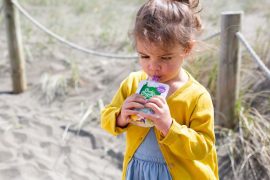November 27, 2017, courtesy of the University of British Columbia Faculty of Medicine
The amount of close and comforting contact between infants and their caregivers can affect children at the molecular level, an effect detectable four years later, according to new research from the University of British Columbia and BC Children’s Hospital Research Institute.
The study showed that children who had been more distressed as infants and had received less physical contact had a molecular profile in their cells that was underdeveloped for their age – pointing to the possibility that they were lagging biologically.
This is first study to show in humans that the simple act of touching, early in life, has deeply-rooted and potentially lifelong consequences on the epigenome – biochemical changes that affect gene expression.
Although the implications for childhood development and adult health have yet to be understood, this finding builds on similar work in rodents. This is first study to show in humans that the simple act of touching, early in life, has deeply-rooted and potentially lifelong consequences on the epigenome – biochemical changes that affect gene expression.
“In children, we think slower epigenetic aging could reflect less favorable developmental progress,” said Michael Kobor, a Professor in the Department of Medical Genetics who leads the “Healthy Starts” theme at BC Children’s Hospital Research Institute.
The study, published Nov. 22 in Development and Psychopathology, involved 94 healthy children in British Columbia. Researchers from UBC and BC Children’s Hospital asked parents of 5-week-old babies to keep a diary of their infants’ behavior (such as sleeping, fussing, crying or feeding) as well as the duration of caregiving that involved bodily contact. When the children were about 4 ½ years old, their DNA was sampled by swabbing the inside of their cheeks.
The team examined a biochemical modification called DNA methylation, in which some parts of the chromosome are tagged with small molecules made of carbon and hydrogen. These molecules act as “dimmer switches” that help to control how active each gene is, and thus affect how cells function.











